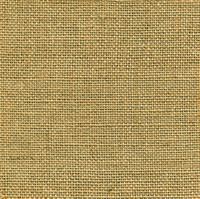Founded 1909 | ||
 | ||
Stock price HMTC (OTCMKTS) US$ 4.00 -0.10 (-2.44%)8 Mar, 4:00 PM GMT-5 - Disclaimer Headquarters Ewing Township, New Jersey, United States | ||
Homasote company overview
Homasote is a brand name associated with the product generically known as cellulose based fiber wall board, which is similar in composition to papier-mâché, made from recycled paper that is compressed under high temperature and pressure and held together with an adhesive. It is 1/2 inch thick and comes in sheets 4 by 8 feet. The Homasote Company operates a 750,000-square-foot (70,000 m2) factory in the West Trenton section of Ewing Township, New Jersey.
Contents
- Homasote company overview
- How to install homasote 440 soundbarrier under finished flooring to control sound
- History
- Model railroading
- Other uses
- Leadership of Homasote
- References
How to install homasote 440 soundbarrier under finished flooring to control sound
History
The Agasote Millboard Company was founded as a division of the Bermuda Trading Company in 1909 by Eugenius Harvey Outerbridge. Outerbridge brought the process to the United States from England.
The first commercial use of the panels were for lining and insides of railroad cars. In 1915, the company won a contract to use the panels as automobile tops. From 1915 to 1925 they supplied board for the tops of Ford Motor Company, Buick, Nash Motors, Studebaker, and Dodge. They also manufactured a larger panel, sold as "vehisote" for truck panels. The panels were used for the exterior of field hospitals and military housing in France during World War I. By 1925 car manufacturers switched to canvas tops and Agasote lost sales, so the company heavily promoted Homasote for its versatility and insulation properties. The company then changed its name to Homasote after its now largest product. The company makes a version called "440 SoundBarrier".
Model railroading
Homasote is frequently used by model railroading for the sub-roadbed or roadbed, because of its noise-deadening qualities, ease of forming into shapes used as roadbed for tracks, ease of driving nails to hold track sections to the bed, light weight and retention of form under plaster scenery. Cork, plywood, hardboard, drywall, and foam insulation are common alternatives to Homasote.
Other uses
Homasote has also found its way into numerous church basements and fellowship halls as the material used by church dartball leagues for the backboard of their baseball field shaped dartboards. It has proven to be a durable material that darts can be thrown into repeatedly without damaging their metal tips.
Homasote has also been used to cover ice rinks in multipurpose arenas for basketball and other events. It keeps ice cold and is durable enough to walk on.
Homasote was also widely used as wall sheeting from the 40's into the 70's, however due to the development of the more fire resistant gypsum board it has decreased in popularity as a wall sheeting.
Homasote is also commonly found in studio spaces and featured in many art institutions as a wall covering and doubling as a type of cork board. It often receives hundreds of coats of paint over the years due to the strength of the product.
Homasote is also used for blocking knit or crochet pieces. "Homosote is sturdy, and incredibly absorbent. It will wick water away from your garment so it dries more quickly. And it's like a bulletin board -- you can stick pins in it easily."
At Northwest Folklife the dance floor in the Fisher Pavilion is built each year from two layers of Homasote overlaid with a layer of painted Masonite. The Homasote base reduces the incidence of impact injuries such as shin splints caused by dancing on the concrete floor.
Homasote is also widely used in theatrical sets as a noise deadening layer for stage platforms; which consist of a 3/4" plywood sublayer, a 1/2" Homasote layer, and a 1/4" Masonite top layer.
